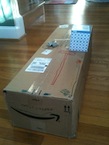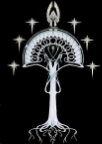erstad
Posts: 1944
Joined: 8/3/2004
From: Midwest USA
Status: offline

|
So, I'll hop in and add a few comments. My original plan was to read the whole AAR before commenting, but after a week or so of reading in my "spare time", I realized that plan was foolish and just focused on the last several pages. Iíll catch up on the rest later.
Spruance has done a good job of summarizing the war at a high level by phase, so Iím not going to try to repeat that. Iíll add some random commentary, and answer any questions people might have (assuming, of course that I remember the answersÖ)
First and foremost, hats off to Bill for being a great opponent. He was a very challenging opponent, and I was schooled more than once. We also meshed well in our desire to keep the game moving along, yet realizing that there is a Real Life out there somewhere that intervenes. I would recommend him as an opponent. I also found it interesting that when I put out feelers earlier this year regarding where he thought the game should end, the answer of 9/1/45 was pretty close to what I was thinking. (I would have played as far as he wanted, but I was thinking that around the historical V-J date was around where things would be starting to get pointless).
If I were to grade my performance, I think the single largest area I fell short was China. In many of my games, itís been a backwater. And my first AE game was on the original release, before they really balanced China, so I steamrolled it with little effort (due to game mechanics and OOB, not any great skill on my part). So I wasnít accustomed to putting a lot of thought into china. Billís aggressiveness in China threw me off balance, and I never really figured out how to adapt. I probably overestimated the ability of the Chinese to successfully mount an early offensive and stayed a little too conservative (for example, leaving some SAA troops in longer than I should have).
A few comments about game mechanics:
- The 8 hex IJN strike capability and the CAP mechanics (pre-recent patch) definitely did work to my advantage. That, plus a good chunk of luck and I hope some skill, kept KB as a force to be reckoned with for most of the war. Post-patch, it seems even an escorted, large strike has a hard time getting through. This pretty much makes an Allied death star invulnerable (similar to what an early-war KB was in the original WITP). I donít have the smarts to say if this is realistic or not, but it definitely changes the game. Itís particularly annoying that the kamiís canít get through, since we know in real life those were always a threat. (and generally the pilots being used as kamis in AE are better trained than in RL).
- I found it surprising that China was able to mount such offensives and run major air operations, and reading in the AAR about the amount of supplies pumped in from Burma, it seems the game gets it wrong here. The reality is that only a trickle of supplies made it over the Hump. XX Bomber Corps was never able to sustain much of an offensive, and thatĎs a small fraction of the air operations running out of China in this game. [Please note: This is not a criticism of Bill. Iím a believer that while this is a war simulation, it is also a game and we are playing the game with the rules we are given. If it lets him pump supplies overland, barring a house rule he is more than free to do so. Itís no different than if I have the 8 hex strike range in mind when I plot a move]
On the supply question - I was basically running very low. Mainline china and korea have been low for a number of months, including many bases red and with little or no supplies. The home islands were adequate, barely. Total supply was around 1.4M, but the DEI was still producing a good chunk which wasnít usable. There was probably only about 0.8M in the active theaters. Which isnít much given the amount of supply needed to keep bases at their minimum.
On the strategic war: Spruance told me he tried hard with subs to strategically interdict the transport of DEI resources. Honestly, I donít think that had a huge impact. However, once there was air interdiction of the sea routes, things went downhill fast. You can stockpile enough resources in the home islands to supplement the large local production. However, thereís no substitute for the oil which never is produced in enough quantities to stockpile. Once the oil is out, the refineries stop and you lose maybe 1000 points of supply production per day. And then when the strategic bombing starts, the loss of HI, LI, and oil in the home islands further cripples supply production. No matter how much supply the IJ have stockpiled, thatís the beginning of the end. (And, BTW, Iím not one of those JFBs that goes massively overboard expanding factories, etc. I do a moderate level of expansion, but since Iím preparing for a long game, I am conscious of the fact that supply spent now is not available for later).
Fuel did start heading down in the HI, but paradoxically the strat bombing of HI makes fuel less of a problem. Plus the fact there is less Navy to fuel  . So I would have been OK there. Of course, there are now millions of points of fuel in the DEI, cut off from the home islands. . So I would have been OK there. Of course, there are now millions of points of fuel in the DEI, cut off from the home islands.
One other random thing to note is how significant strategic bombing VPs are. Thatís been true in every game Iíve been in. They were 20% of the VPs when we stopped. With all of Japan being capable of being swept (either LBA or USN) if we kept going a daylight bombing campaign would rack up points at a rapid rate. [A while back a well-respected forum member, who is generally quite knowledgeable, made a comment something like ďIf the Allies havenít won by the end of 1945, they arenít going to winĒ to which my inner thoughts were ďBull!Ē. Because if they can get in range of the HI they can rack up a gobload of strategic points. All they need is time.]
|
 Printable Version
Printable Version



















 . So I would have been OK there. Of course, there are now millions of points of fuel in the DEI, cut off from the home islands.
. So I would have been OK there. Of course, there are now millions of points of fuel in the DEI, cut off from the home islands. 
 New Messages
New Messages No New Messages
No New Messages Hot Topic w/ New Messages
Hot Topic w/ New Messages Hot Topic w/o New Messages
Hot Topic w/o New Messages Locked w/ New Messages
Locked w/ New Messages Locked w/o New Messages
Locked w/o New Messages Post New Thread
Post New Thread